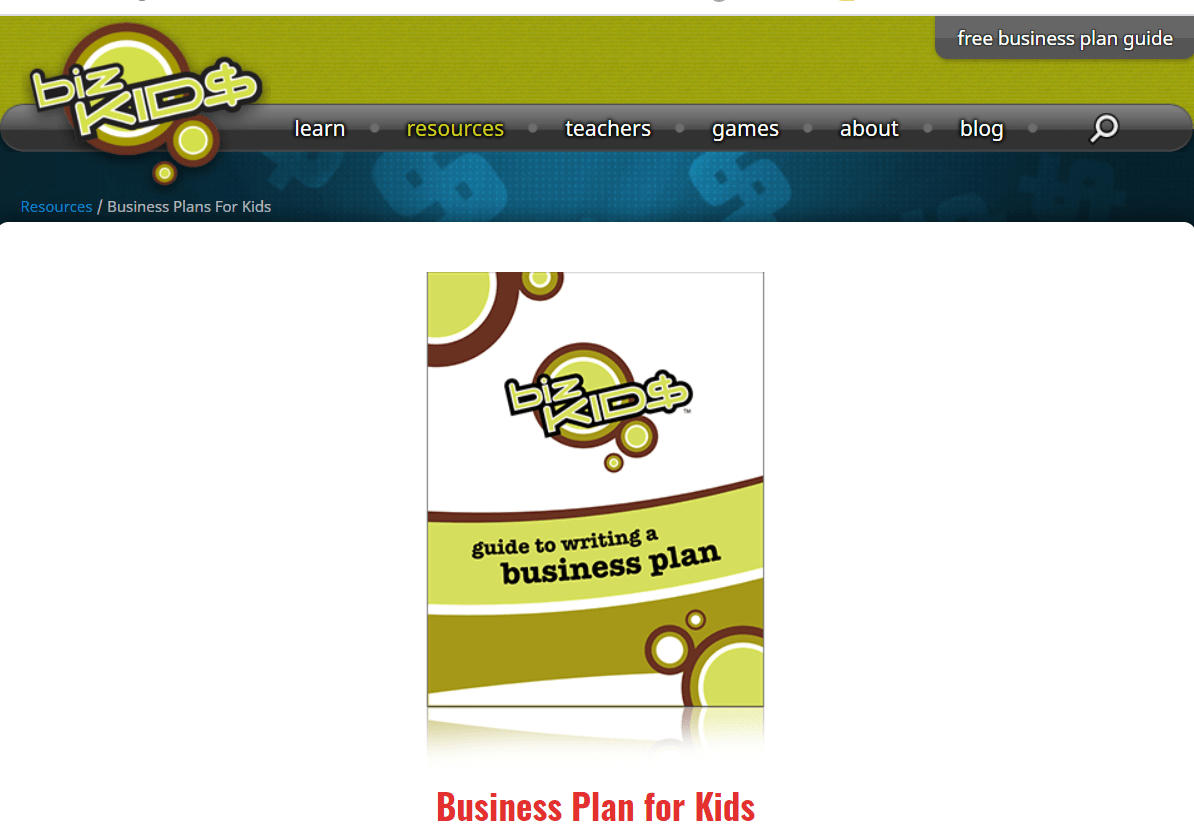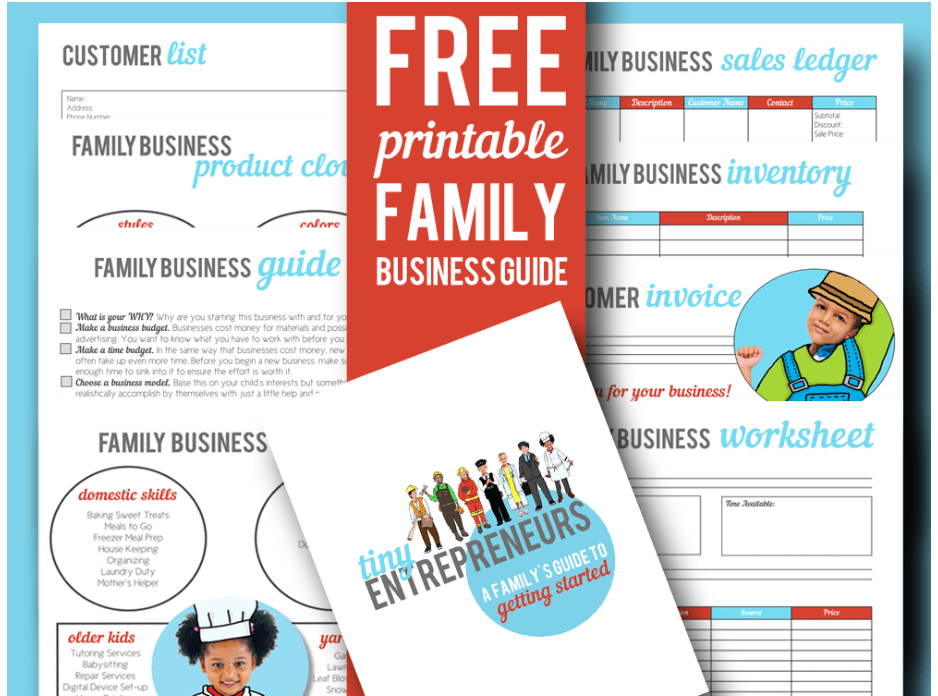

7 Business Plan Templates for Kids (Free Printables!)
By: Author Amanda L. Grossman
Posted on Last updated: May 7, 2024
- Pinterest 948
- Flipboard 0
Download one of these (mostly) free business plan templates for kids to help your child focus on a business idea.
What do supersoakers, Apple computers, and Nike shoes all have in common?

They all started as a business plan.
A business plan template for kids is great for two reasons:
- Your child can play around with it and get familiar with what's required (even if they never start the business)
- It helps kids focus on just one business idea at a time, and to see if they should move forward with it
No matter which category your own child falls into – just playing with business plans, or they have an actual business idea – I’ve got just the free business plan template for you.
Honestly? I wish my own parents would’ve given me one of these when, as a kid, my childhood friend and I had come up with our first kid business idea: selling bean bags. So, good on you for getting your kids involved with business plans so early in life!
Best Business Plan Templates for Kids
Use one of the business plan templates for kids below with one of these 16 kid business ideas .
OR, help them to use one of their original ideas sending sparks in their brain. You can use these 3 kid business plan examples for help with filling it out.
1. Solid Gold Biz Plan
I’ve been in business for 7 years and I’ve made about every mistake in the book.
Probably one of the biggest? Was that I didn't sit down to write a proper business plan (or, ANY business plan) until I was several years into blogging.
Because of this, I created a free business plan template for kids and teens (on Page 6 of this free printable), so that they practice how to do it right, from the beginning!
What makes my free Solid Gold Biz Plan different is that it starts your child thinking about the problem that they want to solve – because ultimately, that is the purpose of creating a product or a service. To solve a specific problem for people.
It then goes on to ask them simple questions that will focus them in on what it takes to plan out a business idea.
For example, I raise the question of how much it will cost to not only create the product/service but to also deliver it and maintain it. These are sometimes costs forgotten costs when creating a business plan.
2. BizKids’ Guide to Writing a Business Plan
This free business plan guide for kids includes sections for your idea, your marketing (and what makes your product unique), your startup costs, and an area for pricing so that you can make sure you’ll make a profit.

At the end is a one-page summary where your child can write up their answers from the previous pages all in the same place. Great for tacking up on the wall!

3. Teen Entrepreneur Toolbox
Anthony ONeal partnered up with Dave Ramsey to create the Teen Entrepreneur Toolbox , a kid’s entrepreneur kit and small business guide for teens.
In other words, it’s so much more than just a business template for kids!
The entrepreneur kit includes the following:
- Access to the Free Entrepreneur Toolbox app
- Teen Portfolio Book
- DVD of Anthony’s Training Video
- Parent’s Guide Book
- Pack of Thank You Cards
- Deck of Conversation Starter Cards about Starting a Business
- Goal Tracker Poster
Here's my full review of the Teen Entrepreneur Toolbox .
4. Proverbial Home Maker’s Family Business Plan Guide
This is such a fun guide that you can fill out with your child, teen, tween, or even the whole family. It includes family business ideas, a sales ledger, an inventory worksheet, and much more.

Business Plan Examples
You may be wondering where you can find business plan examples to show your kids or teens.
For starters, you should look right at home. Are you a small business owner?
Then you’ll definitely want my free Take Your Child to Work Day printables – it’s got a section for you to fill in about your own business, which is a perfect business plan example to discuss with your child.
You can also find two business plan examples on the Small Business Administration’s site (scroll down until you see red buttons for Rebecca’s example business plan, and Andrew’s plan).
They’re not entirely kid-friendly but can give lots of ideas for the kind of information and research to put into a business plan.
Business Plan Activity Worksheets
Check out these free PDF Shark Tank worksheets for students . Students or kids can work through coming up with their own business ideas, create an advertisement for it, and a scoring card to judge the business ideas.
You’ll find a free 30-minute Small Business Administration course for young entrepreneurs meant for teens that you can use with your students (or have your child go through).
Hint: In Objective 3, it goes over how to create a business plan.
Are you an educator? Great – you can get a free entrepreneur curriculum for Grades 1 – 12, with lots of worksheets, from the Venture Lab .
Further resources include:
- Teen Business Video Lessons
- EverFI’s Entrepreneurial Expedition
- FEE’s Course on the Entrepreneur’s Role in Creating Value
- Business Plan Note Taker (lots of great prompts to create a business plan with)
Grab 23 more entrepreneur lesson plans here.
I hope you've found some business templates for kid resources that interest you. Below, you'll find other related kid entrepreneurship articles that will help your kids, teens, and students learn about the entrepreneur's career path.
Related Kid Entrepreneurship Resources
- 27 Youth Entrepreneur Awards and Scholarships
- 5 Kid Entrepreneur Kits
- 14 Kid Entrepreneur Books
- 11 Best Business Simulation Games for Kids
- Latest Posts
Amanda L. Grossman
Latest posts by amanda l. grossman ( see all ).
- 100 Ways to Make Money as a Kid Under 13 (Besides a Lemonade Stand) - November 12, 2024
- 7 Simple Food Market Day Ideas for Kids to Sell at School - October 25, 2024
- 11 Easy Things Kids Can Make and Sell at School (Non-Food) - September 10, 2024

IMAGES